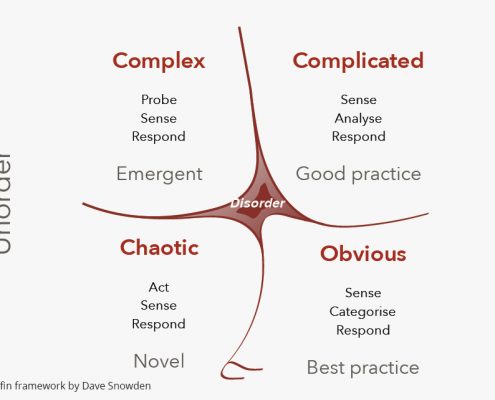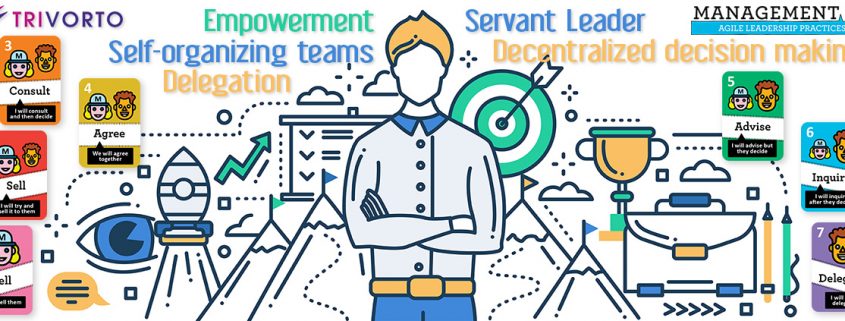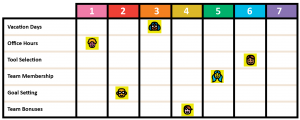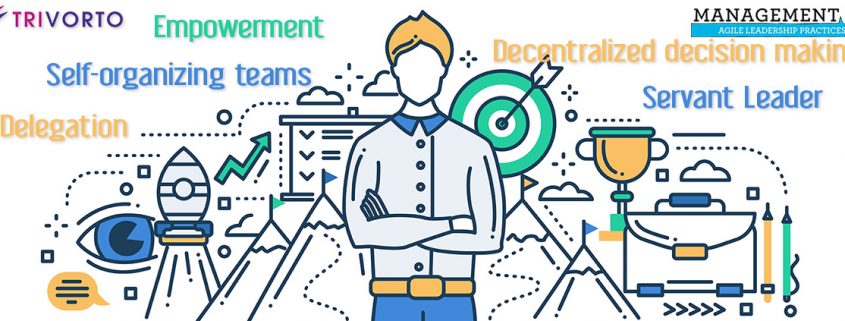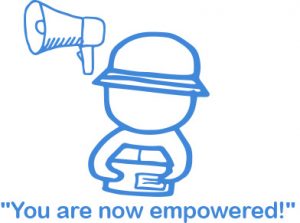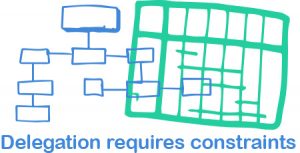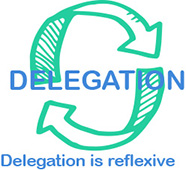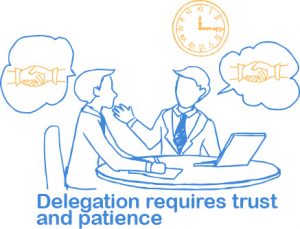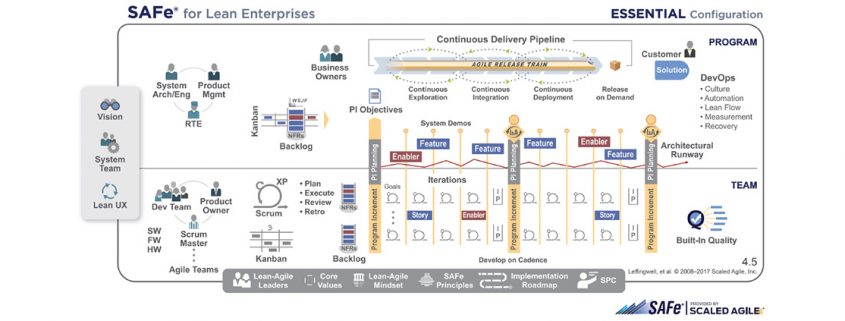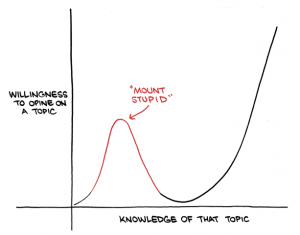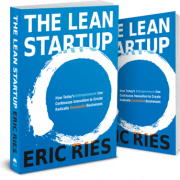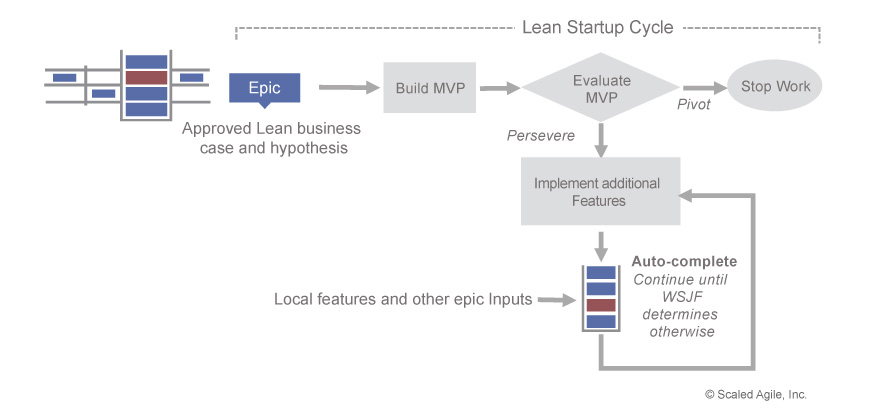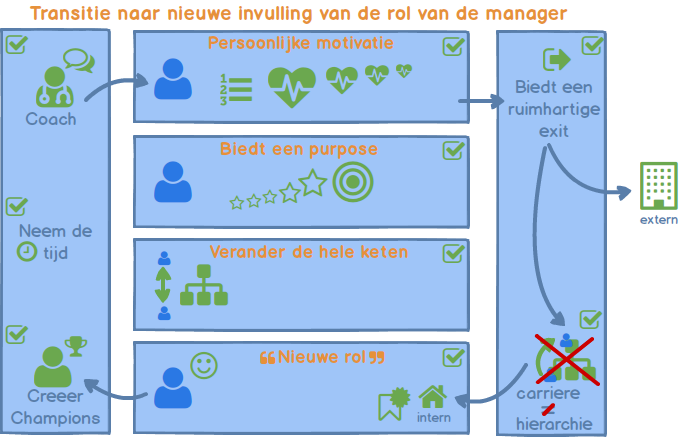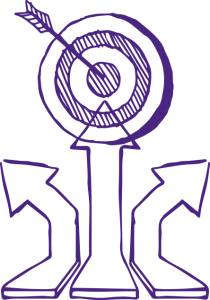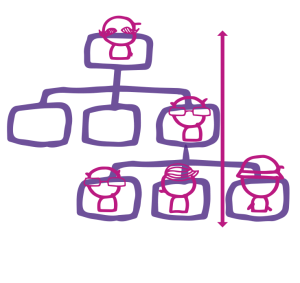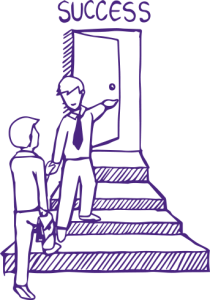Waarom innovatie continu moet zijn
Innovatie is een hot topic op het moment. Veel organisaties investeren tegenwoordig in een of andere vorm van een innovatie lab, of een intern accelerator programma. Of ze starten kleine startup-achtige bedrijfjes, los van de hoofdorganisatie, om nieuwe producten of diensten in de markt te zetten. Of ze nemen een startup over. Velen experimenteren met concepten als lean startup, business model innovation, of design thinking om hun innovatiekracht een boost te geven. Wat deze bedrijven gemeenschappelijk hebben is dat ze zich realiseren dat hun business model niet eeuwig houdbaar is en dat verandering steeds sneller gaat. Wat ze vaak ook gemeenschappelijk lijken te hebben is de gedachte dat je innovatie ‘extern’ van de rest van de organisatie kunt organiseren. Dat lijkt ook samen te hangen met de gedachte dat je maar één keer (tegelijk) succesvol hoeft te innoveren om weer een tijd veilig te zijn. Maar is dat wel zo?
 De meeste beslissingsmakers zijn het er wel over eens dat hun business model onder druk staat of op enig moment onder druk zal komen te staan. Ze beseffen dat ze een vorm van innovatie nodig hebben. Toch zijn er vele voorbeelden die aantonen hoe lastig het is om op tijd te innoveren. Toen de iPhone werd geïntroduceerd vertelde RIM’s CEO Jim Balsillie aan een Reuters verslaggever dat de introductie van Apple’s iPhone geen grote bedreiging was, maar niet meer dan de volgende concurrent die de smartphone business instapt. We weten allemaal hoe het met RIM, de maker van de Blackberry, is afgelopen. Toys ‘R US voelde voor mij altijd als een solide naam. Ik besefte me niet eens dat het bedrijf al uit de vijftiger jaren van de vorige eeuw stamt. En toch vroeg het bedrijf in september 2017 faillissement aan. RadioShack was tientallen jaren een bekende naam in de US en toch ging het bedrijf in in 2017 voor de tweede keer failliet. Wat deze bedrijven gemeenschappelijk hebben is dat ze eens zeer succesvol waren, maar er om een of andere reden niet in slaagden om snel genoeg het roer om te gooien teneinde relevant te blijven.
De meeste beslissingsmakers zijn het er wel over eens dat hun business model onder druk staat of op enig moment onder druk zal komen te staan. Ze beseffen dat ze een vorm van innovatie nodig hebben. Toch zijn er vele voorbeelden die aantonen hoe lastig het is om op tijd te innoveren. Toen de iPhone werd geïntroduceerd vertelde RIM’s CEO Jim Balsillie aan een Reuters verslaggever dat de introductie van Apple’s iPhone geen grote bedreiging was, maar niet meer dan de volgende concurrent die de smartphone business instapt. We weten allemaal hoe het met RIM, de maker van de Blackberry, is afgelopen. Toys ‘R US voelde voor mij altijd als een solide naam. Ik besefte me niet eens dat het bedrijf al uit de vijftiger jaren van de vorige eeuw stamt. En toch vroeg het bedrijf in september 2017 faillissement aan. RadioShack was tientallen jaren een bekende naam in de US en toch ging het bedrijf in in 2017 voor de tweede keer failliet. Wat deze bedrijven gemeenschappelijk hebben is dat ze eens zeer succesvol waren, maar er om een of andere reden niet in slaagden om snel genoeg het roer om te gooien teneinde relevant te blijven.
 Een andere naam uit vervlogen tijden is Palm. Wat de case van Palm extra interessant maakt is dat ze niet begonnen als een hardware bedrijf. Ze ontwikkelden software voor de dices van anderen. Devices die grotendeels commercieel faalden. Maar Palm slaagde erin zichzelf opnieuw uit te vinden en stonden haast synoniem voor de populariteit van de PDA. Ze hebben zelf meerdere pogingen gedaan zichzelf opnieuw uit te vinden gedurende hun bestaan zoals met de opkomst van de smartphone en met de introductie van het WebOS platform. Maar geen van deze pogingen kwam in de buurt van het succes van hun eerste reïncarnatie. De geschiedenis van Palm lijkt te suggereren dat om op lange termijn te overleven je jezelf op tijd opnieuw moet uitvinden. Eén keer is echter niet genoeg, omdat elk business model op den duur aan zijn einde komt. Dat zou betekenen dat de sleutel naar lange termijn succes niet zozeer het vermogen om te innoveren zelf is, maar het vermogen om dit continu te doen. Dus het is niet de innovatie zelf die telt, maar het vermogen steeds weer nieuwe wateren te verkennen; het groeien van nieuwe succesvolle businessmodellen, en op tijd je weer terug te trekken ten faveure van nieuwe veelbelovende business modellen.
Een andere naam uit vervlogen tijden is Palm. Wat de case van Palm extra interessant maakt is dat ze niet begonnen als een hardware bedrijf. Ze ontwikkelden software voor de dices van anderen. Devices die grotendeels commercieel faalden. Maar Palm slaagde erin zichzelf opnieuw uit te vinden en stonden haast synoniem voor de populariteit van de PDA. Ze hebben zelf meerdere pogingen gedaan zichzelf opnieuw uit te vinden gedurende hun bestaan zoals met de opkomst van de smartphone en met de introductie van het WebOS platform. Maar geen van deze pogingen kwam in de buurt van het succes van hun eerste reïncarnatie. De geschiedenis van Palm lijkt te suggereren dat om op lange termijn te overleven je jezelf op tijd opnieuw moet uitvinden. Eén keer is echter niet genoeg, omdat elk business model op den duur aan zijn einde komt. Dat zou betekenen dat de sleutel naar lange termijn succes niet zozeer het vermogen om te innoveren zelf is, maar het vermogen om dit continu te doen. Dus het is niet de innovatie zelf die telt, maar het vermogen steeds weer nieuwe wateren te verkennen; het groeien van nieuwe succesvolle businessmodellen, en op tijd je weer terug te trekken ten faveure van nieuwe veelbelovende business modellen.
Continue innovatie is relevant als de levenscyclus van een businessmodel kort, of onvoorspelbaar is. Of allebei.
Continue innovatie is pas echt relevant als de levenscyclus van een businessmodel kort, of onvoorspelbaar is. Of allebei. Naar onze mening is dat tegenwoordig het geval in de meeste branches. Laten we onderzoeken hoe dat komt. De belangrijkste overkoepelende reden is dat barriers of entry voor nieuwkomers dramatisch verlaagd zijn:
- Toegang tot informatie en kennis is vrijwel gelijk voor iedereen tegenwoordig. Je markt beschermen door middel van superieure marktkennis was ooit een standaard manier om je concurrentievoordeel te verdedigen. Maar dit gaat nauwelijks meer op.
- Toegang tot talent is veel gemakkelijker. Mensen kunnen tegenwoordig overal werken. We hoeven niet per se elke dag bij elkaar te komen in hetzelfde kantoorgebouw.
- Kapitaal is makkelijker verkrijgbaar. Ondanks dat investeringsmaatschappijen tegenwoordig hogere eisen lijken te stellen, zijn er nog genoeg andere mogelijkheden zoals accelerator programma’s, startup boot camps, en corporate incubator programma’s. Angel investors zijn ook een goede optie voor velen, en crowd-funding platforms groeien nog steeds.
- Kapitaal is niet alleen makkelijker verkrijgbaar, je hebt er ook minder van nodig. Het ontwikkelen van een product of dienst, vooral online, is nog nooit zo goedkoop geweest.
- Volgens Ash Maurya kun je een bedrijf tegenwoordig vanaf elke plek ter wereld starten en laten groeien. Geografische grenzen zijn er nauwelijks meer. Sterker nog, je kunt zelfs een globale speler zijn. Hal Varian, Chief Economist at Google, zegt hierover:
Als het einde van de 20e eeuw het tijdperk van de multinational was, dan is de vroege 21e eeuw het tijdperk van de micro-multinationals: kleine bedrijven die mondiaal opereren.
Het concurrentie landschap is hierdoor behoorlijk op z’n kop gezet. Maar de meeste organisaties zijn ontworpen om een langdurig concurrentievoordeel te verdedigen. Ze zijn ontworpen om het laatste restje efficiëntie uit een business model te persen voor het op te geven. Als gevolg hiervan zijn ze slecht toegerust voor snelle en herhaaldelijke innovatie. Dit verklaart mede de populariteit van het extern organiseren van innovatie, weg van de kern van de organisatie, afgeschermd van de gebruikelijke bureaucratie. Maar er is een nog belangrijkere consequentie die business leiders zullen moeten begrijpen en accepteren als ze ook maar een kans willen hebben om hun organisaties langdurig success te blijven bezorgen:
Een duurzaam langdurig concurrentievoordeel bestaat niet meer…
 Laat dat even bezinken…. Een concurrentievoordeel wordt over het algemeen omschreven als het vermogen van een organisatie het beter te doen dan zijn concurrenten. De Engelse term hiervoor, Competitive Advantage is ook de titel van een boek uit 1985 van Michael Porter, onmiskenbaar het standaardwerk op dit onderwerp. Het grootste probleem met Porter’s model is zijn aanname dat een concurrentievoordeel duurzaam kan zijn, wat inhoudt dat je je voordeel langdurig succesvol kunt verdedigen. In de hedendaagse wereld van snelle veranderingen en hoge complexiteit is dat een gevaarlijke aanname. Het bedrijvenkerkhof ligt vol met ooit bekende en succesvolle bedrijven die te lang vasthielden aan die aanname. Rita Gunther McGrath, een bekend expert op dit gebied, zegt het als volgt:
Laat dat even bezinken…. Een concurrentievoordeel wordt over het algemeen omschreven als het vermogen van een organisatie het beter te doen dan zijn concurrenten. De Engelse term hiervoor, Competitive Advantage is ook de titel van een boek uit 1985 van Michael Porter, onmiskenbaar het standaardwerk op dit onderwerp. Het grootste probleem met Porter’s model is zijn aanname dat een concurrentievoordeel duurzaam kan zijn, wat inhoudt dat je je voordeel langdurig succesvol kunt verdedigen. In de hedendaagse wereld van snelle veranderingen en hoge complexiteit is dat een gevaarlijke aanname. Het bedrijvenkerkhof ligt vol met ooit bekende en succesvolle bedrijven die te lang vasthielden aan die aanname. Rita Gunther McGrath, een bekend expert op dit gebied, zegt het als volgt:
When competitive advantages don’t last, or last for a much shorter time than they used to, the strategy playbook needs to change.
Het tempo van verandering is simpelweg te hoog voor een strategie, gebaseerd op duurzame concurrentievoordelen, om bij te blijven. De verlaagde toegangsbarrières maken het heel moeilijk om een concurrentievoordeel langdurig successful te verdedigen. Daarbij, wil wil er nu altijd in de verdediging zijn? Daarom moet innovatie continu zijn. Maar dat brengt ons terug bij de vraag of het verstandig is om innovatie te externaliseren. Ik denk dat je mijn mening inmiddels wel kunt raden. Dat is het niet. Een accelerator programma kan best een aantal waardevolle ideeën opleveren. En een interne startup kan best de levensvatbaarheid van een business model aantonen. Maar tegelijkertijd is er niets fundamenteels veranderd in de organisatie. Terwijl een klein agile deel van de organisatie met nieuwe ideeën komt, is de rest van de organisatie nog steeds gericht op het verdedigen van een langdurig concurrentievoordeel, op maximalisatie van efficiëntie, en op schaalvoordelen. Het is nog steeds dezelfde trage olietanker. Wat gebeurt er als nieuwe businessmodellen uiteindelijk geabsorbeerd worden door de moederorganisatie? Op termijn heb je weinig bereikt. Wat er nodig is, is wat wij een Adaptieve Organisatie noemen:
De Adaptieve Organisatie is in staat zichzelf continu opnieuw uit te vinden.
Natuurlijk is het goed nieuws dat organisaties het initiatief nemen voor innovatie programma’s. Ik ben echter bang dat de tijd zal uitwijzen dat de huidige trend van het externaliseren van innovatie, uiteindelijk tot teleurstellende resultaten zal leiden. Het voelt ook alsof senior management niet 100% aan boord is: ze leunen nog altijd op de huidige organisatie zoals die is, en innovatie is een show die zich deels achter de coulissen afspeelt en makkelijke geannuleerd kan worden als de populariteit achteruit gaat. Ik zou willen eindigen met een quote van de beroemde Peter Drucker:
Because the purpose of business is to create a customer, the business enterprise has two–and only two–basic functions: marketing and innovation
Meer weten over continue innovatie? Volg onze training Continuous Innovation of neem vrijblijvend contact met ons op.
Bronnen:
[Dabrowski, W. (2007). “Update 1-RIM Co-CEO doesn’t see threat from Apple’s iPhone”. Reuters.]
[Hal Varian (2011). Micro-multinationals will run the world. http://foreignpolicy.com/2011/08/15/micromultinationals-will-run-the-world/]
[McGrath, Rita Gunther. (2013). The end of competitive advantage. Harvard Business Review Press. p. 4.]








